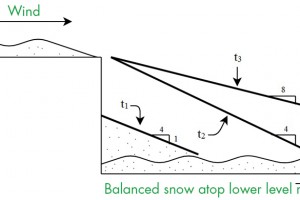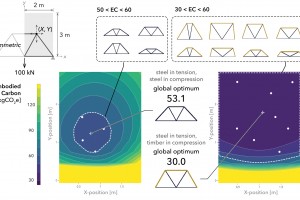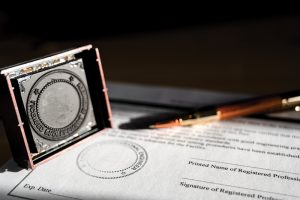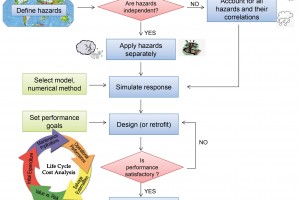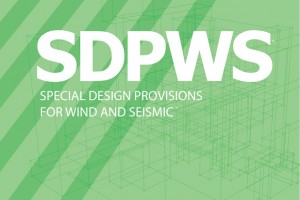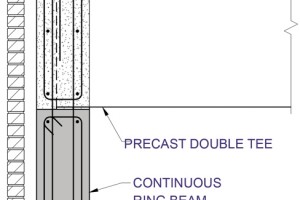One could argue that drift loads are the most important snow load since they account for roughly 75% of all snow-related structural problems. The various types of roof snowdrifts are reasonably well understood. However, a new snowdrift was recently observed downwind of a run of roof-top refrigeration piping, which did not seem consistent with our current understanding of snowdrift formation. In this article, the drift formation processes for four common snowdrifts – leeward roof step drifts, gable roof drifts, windward roof step drift, and parapet wall/roof projection drifts – are reviewed as well as the apparent formation process for the new roof-top piping-run drift. Finally, an explanation for the apparent inconsistency between the new piping-run drift and common drifts is provided.
…Review Category : Articles
Designed by the Renzo Piano Building Workshop, the Academy Museum of Motion Pictures consists of a major renovation to the 1930s May Company Building (renamed the Saban Building) plus a soaring spherical addition that includes the 1,000-seat Geffen Theater. The Saban building is connected to the new theater with three steel and glass bridges.
…The climate crisis has shifted priorities in all sectors. For structural engineers, improving performance, such as reducing emissions embodied in structural materials, can improve low-carbon building design. Parametric design can enhance current structural design methods by enabling designers to more readily explore the design space, the space of available design solutions, and optimize within it for single or multiple objectives. This exploration can reveal high-performance or optimal structural solutions that may otherwise have been overlooked. While many architects have started using parametric design methods in recent years, there are untapped opportunities for structural engineers to use such approaches to enhance collaborations with architects and play a more active role in the design process. This article presents both theoretical background and practical tips for structural engineers to implement parametric design in their work.
…Structural engineering firms should embrace Lean thinking, tools, and techniques to reduce excess waste in processes and produce a higher quality product for clients. The Lean Construction Institute (LCI) recognizes the 6 Tenets of Lean Construction: Respect for People, Process & Flow, Eliminate Waste, Generation of Value, Continuous Improvement, and Optimize the Whole.
…The July 2021 Structural Forum article presented the general state of ethics instruction and some shortcomings. This second article offers ideas that might better influence engineering ethics instruction.
…John Chrysler, P.E., FTMS, is stepping down as the masonry advisor to STRUCTURE® magazine’s Editorial Board. John has been in the masonry industry for over 50 years, evenly split working for a large masonry contractor and, most recently, as Executive Director of the Masonry Institute of America (MIA). John is a licensed P.E in California and Arizona and a Certified Structural Masonry Special Inspector for both ICC and the State of California. While at MIA, John has served in several roles including President of The Masonry Society, member of the Board of Directors, and many committees. John is currently Chair of TMS 402/602, Building Code Requirements for Masonry Structures.
…CASE, NCSEA, and SEI, the three structural engineering associations that support this magazine, have various shared interests. Perhaps the most important shared interest is the promotion and support of licensure for structural engineers – the S.E. License. A Vision for the Future of Structural Engineering Licensure is a detailed paper outlining this common position. This paper, developed by the Structural Engineering Licensure Coalition, has previously been discussed in these pages and is something practicing structural engineers are encouraged to be familiar with.
…Why Is Everyone Talking About Performance-Based Multi-Hazard Design?
The design for multi-hazard mitigation is a new subprinciple of structural engineering, aiming to protect structures from hazards (earthquakes, winds, tsunamis, snowfalls, floods, wild-fire, etc.). This is done by anticipating damage, minimizing consequence losses, and targeting fast recovery in the event’s aftermath. Recurring hazards may be independent or interrelated (concurrent or successive). Earthquakes and winds are typical examples of independent actions, while heavy rain and high winds, main earthquake shocks, and aftershocks are examples of concurrent and successive events, respectively.
…The 2021 Edition of Special Design Provisions for Wind and Seismic (SDPWS) was approved as an American National Standard on July 22, 2020, with the designation ANSI/AWC SDPWS-2021 (Figure 1). The 2021 SDPWS was developed by the American Wood Council’s (AWC’s) Wood Design Standards Committee (WDSC) and contains provisions for the design of wood members, fasteners, and assemblies to resist wind and seismic forces. Notable revisions are summarized below (also see Table 1 online for a summary of changes by Chapter):
…STRUCTURE magazine published Structural Design and Coordination of ICC 500 Tornado Shelters in July 2020, summarizing when a storm shelter is required, design criteria, and lessons learned. The authors of the July 2020 article provide guidance on design criteria, including the significantly increased basic wind speed, the increased internal pressure coefficient which presumes a breach in the building envelope, the increased directionality factor, and increased minimum roof live load, among other design criteria. To supplement the information in the previous article and illustrate the implications of storm shelter design criteria, the Table summarizes and compares wind load design parameters for a fictitious building used conventionally or as a storm shelter.
…
